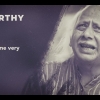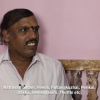Azeez Taruvana: As a researcher on the art of mappilappattu (mappila songs), could you tell us about its origins and early development?
Faisal Elettil: I don’t think we can trace the exact origins of mappilappattu to a specific time period or year. Going by documentary evidence, we could say that Mohyuddin Mala published in 1607 was the first mappilappattu ever. We know of the relations between the Arabs and Kerala—the arrival of Malik Deenar and his group, spread of Islam etc. Unlike in other places, early Muslims in Kerala blended in with the indigenous culture and traditions, without losing their distinct religious identity. In food habits, clothing, culture, art etc., they retained their own uniqueness. This music form, therefore, has its roots in this unique blend. Mappilappattu also has some links with Tamil Nadu, especially to places like Kayalpattinam. It is said that the cultural form reached Kayalpattinam from Yemen and from there arrived in Kerala. Even now we see elements of the early Kerala culture at Kayalpattinam. For such a society, art and culture are so essential—remember the works of Tamil Pulavas like the Zakum Padappaattu (battle songs) etc. Along with Mohyuddin Mala in Kerala, Tamil Nadu had a similar mappilappattu tradition around the same time. This cultural form must have had the greatest influence on Kerala including on the early language. So anyway, Mohyuddin Mala can be called the earliest of all mappila songs. The earliest of mappilappattu were belong to the category of sthuthigeethangal (songs to god and saints)—like Ifaimala, Manjakulam Mala, Nafeesat Mala etc. Later on, the genre saw the emergence of new themes.
A.T.: How would you analyze the relationship between mappilappattu and Arabi Malayalam?
F.E.: As mentioned, early Muslims who arrived in Kerala generally knew Arabic very well and to blend in easily with the local culture, they chose to write and read Malayalam in Arabic script. Interestingly, even today, our elders of 90-95 years of age, who don’t know how to read pure Malayalam, are fluent in Arabi Malayalam. There could be arguments over whether it’s a language or just a script. Since Arabic doesn’t have equivalents of Malayalam letters like ksha or zha, they developed a system to address these technical problems. Almost all the earliest of Mappila works were in Arabi Malayalam—there were more than 500 malappattu songs and supposedly around 5000 books. Chakkeri Moideenkutty, father of former Kerala Legislative Assembly Speaker and Education Minister, Chakkeri Ahmedkutty, wrote a book called Badar al-Kubra, a Badar padappattu or war song. I have a small Arabi Malayalam dictionary called Bhasha Bhushanam. There are books on medicine, short stories, novels etc. The Arabi Malayalam novel called Chahar Darvesh actually precedes Indulekha, the first proper novel in Malayalam. Then there is the Bible composed in Arabi Malayalam. The community had totally accepted Arabi Malayalam as their basic medium of communication. The books were not only religious works but also covered different themes. This legacy and history should be remembered. There was even a women’s magazine. Remember that the modern Muslim publishers thought of a women’s magazine only 13 years ago. Arabi Malayalam was therefore a form of resistance too. Moreover, though there were Arabi Kannada, Arabi Tamil, Arabi Punjabi etc., but none was as vibrant as Arabi Malayalam.
A.T.: You mentioned that there are about 5000 works in Arabi Malayalam. According to researchers like K.K. Abdul Kareem, there must be around 3000 works in poetry and 1200 in prose. In that case, there must be books that have dealt with almost every aspect of life in Kerala. For example, songs sung by beedi workers.
F.E.: Mala songs weren’t very popular initially. It was a century later that Kunhayan Musaliyar’s Kappa pattu (ship songs) came out. Kappa pattu drew a parallel between human life and that of a ship. Nool Madh is the earliest work praising the Prophet. It’s a beautiful poem. (Singing…)
This was followed by the emergence of Moyinkutty Vaidyar, his poems and his fresh style. Folk songs acquired much popularity during this period with songs about different occupations like you mentioned, entertainment songs etc. Till then, songs for entertainment were never documented properly. Even Moyinkutty Vaidyar used to write such (entertainment) songs like Mullappoo cholayil moolunna Vande ('bee that hums around in a jasmine garden'), songs about travelling in trains etc. Almost any topic would to be made into song. It was during this period that mappilappattu acquired immense popularity among the masses. Vaidyar brought mappilappattu to the common masses like never before. This was not so much on account of his language's simplicity as the diverse themes he chose to write about.
A.T.: Mappilappattu originated from Arabi Malayalam and emerged as its literary form. Yet we come across Tamil, Sanskrit and Persian words in mappilappattu.
F.E.: There is a composition called Malappuram Padappattu by Moyinkutty Vaidyar which is completely in Sanskrit. He must have learnt Sanskrit since he was a vaidyar (traditional medical practitioner). We even find English words in some songs. I can’t remember the entire line, but there is the mention of the word Fortaand in one of Vaidyar’s poems. We discovered that Fortaand was actually a combination of the English 'forty' and the Malayalam aand (years)—40 years. It seems that the word was used to match the rhyme. So it appears that Vaidyar therefore, took the liberty to borrow words from any language just to suit the poetic meter of his work.
(Singing…)
Some of his songs have very few Malayalam words, but the Arabic ones used are those which were part of routine conversation. This was done mainly for the sake of rhythm and alliteration.
The musical component in mappilappattu has not yet been studied in depth. More than the lyric, it is the music that attracts people more towards songs, be it in any language. But there has been no serious study about the origins of the singing style followed in mappilappattu. The general perception is that Arabi Malayalam is just a blend of two languages like the case of Manipravalam (Sanskrit and Malayalam). But the ishal or the musical elements in it haven’t been studied well. Most of those who have studied the literary aspects of mappilappattu hardly knew about its music and vice versa. Researchers with expertise in both are very rare. Music plays a major role in mappilappattu’s popularity as much as its lyrics. However there has been no academic study on it so far.
A.T.: So can we say that mappilappattu is a mix of Arabic music and Dravidian beats?
F.E.: But then there are songs which stick to either one of those forms and do not mix. I hope I am not digressing. Pure Arabic meters like Madeed (Al-Madeed) and ladeed (Al-Kaamil/ Al- Baseet) have been used in many songs here. Let me sing a line from a mapilla song. (Singing…) This is in folk metre. (Singing a line from another song…) This is purely in Arabic metre. But it doesn’t mean that the former song is not mappilappattu. Some tunes are directly borrowed from Arabic music, yet others are purely local. Moyinkutty Vaidyar set words and tunes according to the character of the content. He was so grounded in Kerala culture that he even used to refer to indigenous and rare musical instruments in his songs. He actually transported the Malayali cultural elements onto Arabian landscapes. This unique contribution of his is the reason for the popularity of his songs.
A.T.: Earlier the Malayali Muslim’s social landscape was deeply interlinked with Arabi Malayalam and mappilappattu. What has been the contribution of mappilappattu to the Muslim reform movements and renaissance?
F.E.: That’s a very important point. Most of these reformist songs emerged after proper Malayalam took over. However Pulikottil Haider had composed Duraachaaramala, Kaathukuthumala which were songs on social evils and regressive practices. Songs by T. Ubaid were so radical that they can hardly be written now, given the present social circumstances of his land. Similarly, there have been songs protesting institutions like the dowry system, socio-economic inequalities, usury etc. (Gives examples of songs) These songs are relevant even today. Most of the songs in K.T. Muhammad’s social reformist plays were taken from this tradition. He could bring in social issues into these songs mainly on account of the freedom offered in this tradition to do such things.
A.T.: There is huge female presence in the world of mappilappattu, as singers and lyricists, isn’t there?
F.E.: There were lyricists of course. The women singers like Ramla Begum and Aisha Begum emerged only after the advent of gramophone records. There were lyricists P.K. Haleema, Kundil Kunjamina, V. Ayshakutty, and S.M. Jameela Beevi, who was the last to pass away. Fatu Mala, Umar Kisapatt etc were written by Kundil Kunjamina and V. Ayshakutty respectively. Chandira sundari mala by P.K. Haleema stands out among them. Most of the popular famous weddings songs are part of this composition. Her songs are marked by perfect meter and rhythm. One of them was sung by Dasettan (K.J. Yesudas). All her songs are very popular and are still sung widely. (Sings a couple of songs written by P.K. Haleema).
A.T.: At one point of time, S.A. Jameel’s Kathupattukal (letter songs) invoked nostalgia among the Malayali expatriates in Gulf.
F.E.: Kathupattukal have always been present in mappilappattu, for e.g. Mariyakutty kathu by Moyinkutty Vaidyar. But the genre became more popular after the Malayali's large scale migration to the Gulf. When we were young, there was this practice of sending a whole bunch of letters along with the expatriate, who came on a home-visit, meant to be distributed to various addressees in the Gulf countries. Those were the times when we would wait for the postman and also when illiterates would get someone to write letters for them. Jameel’s Dubai Kathupattu (Dubai letter songs) assumed significance thanks to the period’s socio-economic circumstances. He was a professional singer, lyricist, painter and a psychologist too. In the early days of Gulf migration, we never had the luxury of easy phone calls; we had to go and wait in the neighbourhood houses that had telephones to receive calls or else travel to the nearest town Calicut to book ‘trunk’ calls. That was the time when Gulf expats could come home only after six or eight years and would never get a chance to see their children grow up. This was much before the Calicut (Kozhikode) airport came up. Around 1977-78, P.V. Abdul Wahab, the present Rajyasabha MP, who hails from Nilambur, took Jameel for a concert in the Gulf. As a psychologist, Jameel used to have many patients. Most of them were depressed wives of those who were away in the Gulf. So when he went for the Gulf concert, Jameel composed a song based on this issue. He travelled there in a ship. He stayed there for eight months unlike these days when artists go and come back in two days. He introduced Kathupattu for the sake of presenting something new. Forty years have passed since and still his Dubai Kathupattu remains very popular. (Singing…) Every husband in the Gulf and his lonely wife back home could relate personally to the characters in the songs. This added to their popularity. The first study on this was done by N.P. Muhammad and was published in Kalakaumudi (Malayalam magazine). There were many who chose to return home for good, deeply touched by these emotionally charged songs. Even today, Jameel’s Kathupattukal are in high demand in every cultural program of the expat community.












